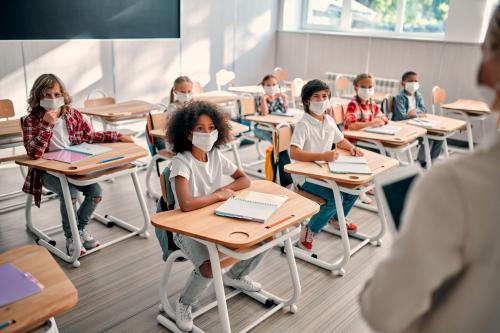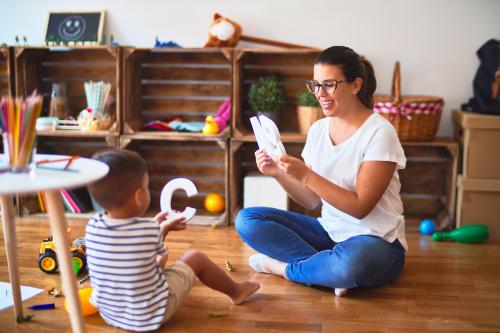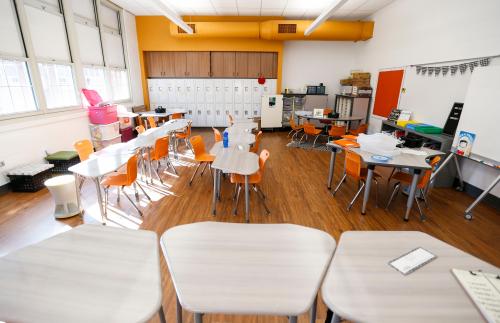After a year of COVID-19, we see a glimmer of light at the end of a very long tunnel. Millions across the U.S. and globally are vaccinated, corporate executives are making plans to reopen offices, and teachers and children are going back to the classroom after more than a year of remote learning for many students. The light became brighter on March 11, 2021 when President Biden signed the American Rescue Plan Act of 2021—a $1.9 trillion relief package—that will provide immediate relief for children and families, especially those who suffered the greatest financial hardships before and during the pandemic.
The rescue plan marks a bold step forward in addressing our nation’s child poverty crisis, with experts predicting the plan could cut child poverty by more than half. This provides much needed hope and long overdue relief to children and families, particularly those of color, who continue to struggle with food and housing insecurity and financial hardship. In the U.S., economic disparities among families lead to large gaps in educational outcomes. Achievement gaps between cognitive and social skills of middle-income children and their peers from under-resourced areas emerge as early as age 3, setting the trajectory that leads to poorer academic performance. Indeed, a recent report suggested that the gap between children from under-resourced and more privileged environments became more sizable during the pandemic.
How can we leverage the current crisis as a unique opportunity for educators, parents, researchers, and policymakers to fully reimagine education systems to be more equitable and designed for the 21st rather than the 20th century?
The plan includes an Education Stabilization Fund that provides $123 billion to support reopening K-12 schools with another $1.25 billion for summer enrichment, $1.25 billion for after-school programs, and $3 billion for education technology. These are all critically important investments to rebuild our education system, but what if we went one step beyond building back to building back better. How might we rethink education systems for the future and the cities in which they reside? That is, how can we leverage the current crisis as a unique opportunity for educators, parents, researchers, and policymakers to fully reimagine education systems to be more equitable and designed for the 21st rather than the 20th century?
Charting a path for a broad range of skills and competencies
Our recent Brookings Policy 2020 report on education reform highlights that children need to develop a breadth of skills beyond literacy and numeracy to engage in lifelong learning and succeed in today’s globalized and rapidly changing world. In the report, we propose a model for transformational education reform around how and what children learn. Years of accumulated evidence in the science of learning demonstrates that children learn best when education is active with room for discovery and experiential learning; engaging without distraction; made meaningful through connections between new information and prior knowledge; socially interactive with peer collaboration and adult support; iterative with opportunities to form, test, and revise hypotheses about how the world works; and joyful.
When examining what children need to learn to thrive in today’s globalized and rapidly changing world, we offer the 6 Cs—collaboration, communication, content, critical thinking, creative innovation, and confidence—a suite of skills that build on each other and are increasingly recognized as essential skills in both the classroom and the workplace.
Importantly, the 6 Cs can be applied to learning in schools as well as beyond school walls. One example is Playful Learning Landscapes (PLL)—an initiative that uniquely blends the science of learning, placemaking, and community cohesion. PLL transforms public and shared spaces into fun and enriched learning hubs for the development of healthy children, families, and communities, and offers a powerful solution with a wide range of outcomes. Data from PLL installations in cities including Philadelphia and Chicago show that PLL promotes the kinds of caregiver-child communication that supports language learning and relationship building, encourages children’s talk about numbers, letters, and spatial relations, and increases caregivers’ understanding about the connection between play and learning. At the same time, PLL engages communities around the revitalization of the public realm, creating new opportunities for multigenerational social interaction and making cities themselves more vibrant and livable.
The passage of the American Rescue Plan Act provides desperately needed funding to rebuild the essential systems that support children and families—including billions of dollars for education, housing stabilization, and transportation. While these investments are an important step forward, broadening our vision to consider both a breadth of skills and breadth of context provides a more innovative and longer-term vision for preparing children to thrive in school and beyond. The pandemic’s impact on pre-K through 12 education has generated more interest than ever in innovations that complement school-based learning. Now is the time to leverage that momentum and chart a path to help learners develop a broad range of skills and competencies in and out of school. We can not only rebuild and resuscitate the education system of the past, but also use this moment as an opportunity to envision a system that helps all children thrive by building back better.








Commentary
Building back better: The promise of the American Rescue Plan for education
April 9, 2021